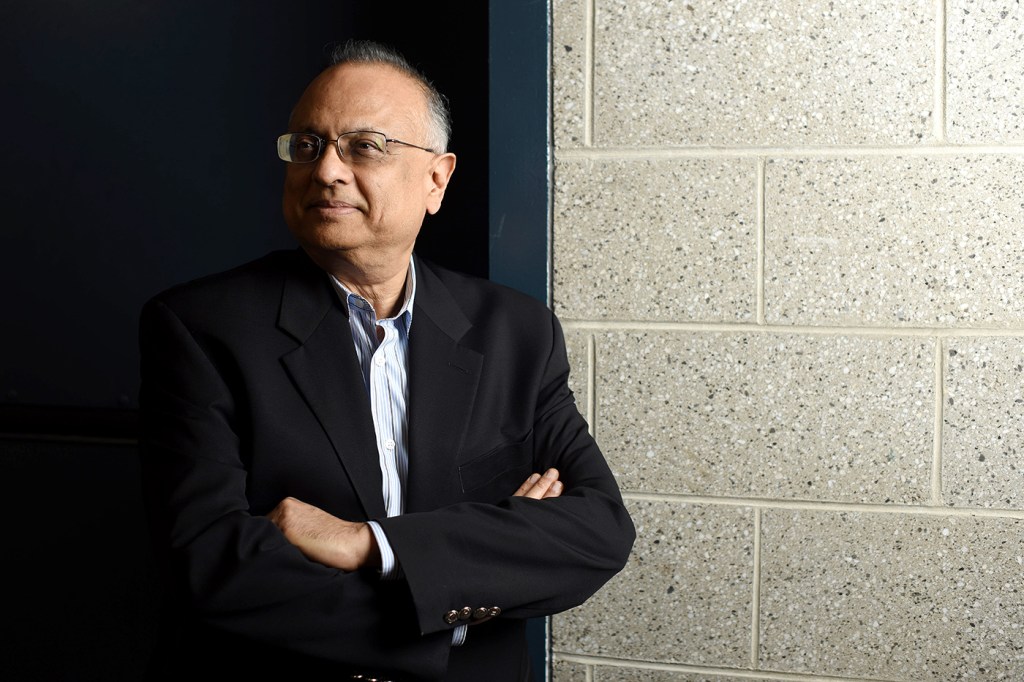Quantum information systems will revolutionize computing… as soon as we figure out how to make them.

Technology advances at a dizzying pace. The power we have at our fingertips, packed into phones and laptops, is well beyond what anyone could have imagined when the first home computers were released in the 1970s. But at the core of these devices, not much has changed.
Now a group of researchers led by Northeastern physicist Arun Bansil has received a $3.54 million grant from the Department of Energy to investigate new ways to design quantum information systems, which could revolutionize data encryption, enable new medical treatments, and more accurately model the changing climate.
Typical computers store information and make calculations using a quantity called a bit, which is essentially a switch that can be turned on or off. To make more powerful computers, we have simply added more bits.
“In that sense, computing in the last 50 years, its underlying principle has not changed,” said Bansil, who is a University Distinguished Professor of Physics.
But some problems are so complicated that even our most powerful supercomputers can’t handle them. Quantum computers promise to provide a more efficient way to process large amounts of information, opening the door to “an entire new generation of technologies, sensors, and communications systems which are completely outside the domain of current thinking,” Bansil said.
The basis for this revolution is something called a quantum bit, or qubit, for short.
Understanding the qubit requires you to perform some mental gymnastics. It doesn’t exactly obey the intuitive rules of reality.
This is a new frontier. You really have a fundamental change in the underlying paradigm from a classical bit to something that, in principle, is capable of much more information.
Arun Bansil, University Distinguished Professor of Physics
Imagine a typical computer bit as an arrow that can only point up or down, Bansil said. A qubit, then, would be an arrow that could point in any direction. But as soon as you look at it, because of a bizarre principle of quantum mechanics, it can only point up or down.
When the arrow isn’t straight up or straight down, it’s in a quantum state called superposition. A particle in superposition can exist in multiple states at once, until it is observed. Electrons can spin both clockwise and counterclockwise at the same time, a photon can be both a particle and a wave, and one atom can exist in two locations almost two feet apart. Quantum information systems can use the probability that a qubit will be in one state or the other when measured to make calculations.
“This qubit, by its very nature, is going to be able to code a lot more information than a bit only going up and down,” Bansil said. “That’s the heart of the quantum computer.”
As you add more qubits, things get weirder. Qubits can become entangled with each other. This phenomenon, which Albert Einstein famously dismissed as “spooky action at a distance,” occurs when two particles are so deeply linked that changing one instantly changes the other, even if it isn’t nearby. A quantum computer can harness this ability to increase its computing power.
The curious properties of qubits allow quantum computers to make calculations in a fundamentally different way. If you ask a traditional computer to find the fastest way for a salesman to visit 100 different cities, it will try to calculate every route separately and pick the best one.
“There are so many possibilities that our standard computers have trouble solving this problem,” Bansil said. “The computer may take so long that this guy would miss his flight.”
A quantum computer could evaluate multiple possibilities simultaneously and come up with an answer much faster. That is, if researchers can get one to work.
“Control of this quantum state is intrinsically more tricky,” Bansil said. Small changes in temperature or interference from other particles can knock qubits out of superposition and introduce errors into the calculations.
Bansil is working with Northeastern associate professor Adrian Feiguin and theorists from Boston University, Massachusetts Institute of Technology, University of Central Florida, and Temple University to investigate new possible qubits. They will evaluate not only which materials might work as qubits, but also how to control them in groups and keep them stable.
“This is a new frontier,” Bansil said. “You really have a fundamental change in the underlying paradigm from a classical bit to something that, in principle, is capable of much more information.”
For media inquiries, please contact media@northeastern.edu.




